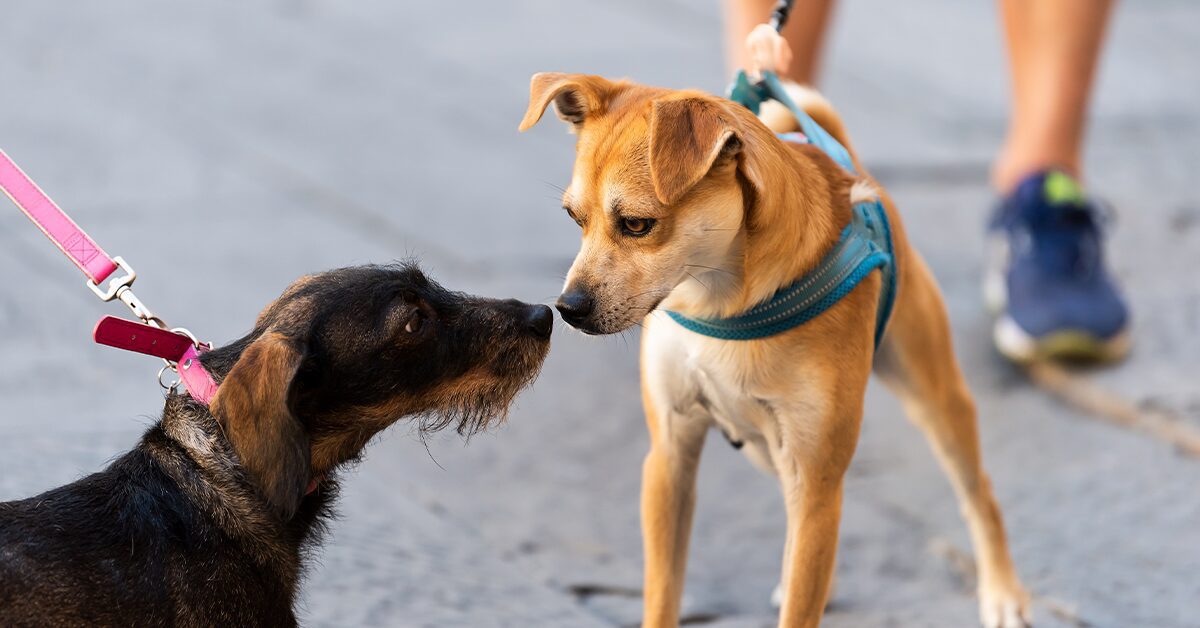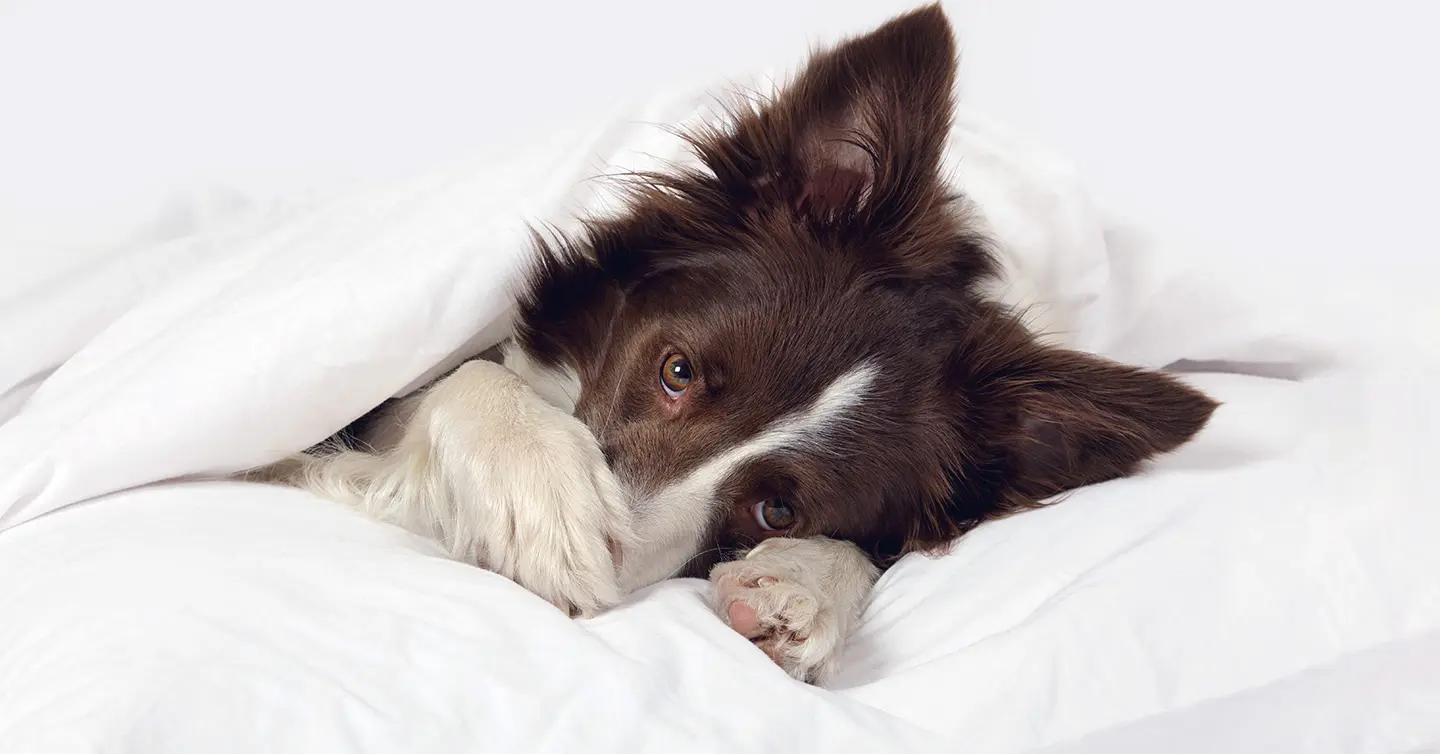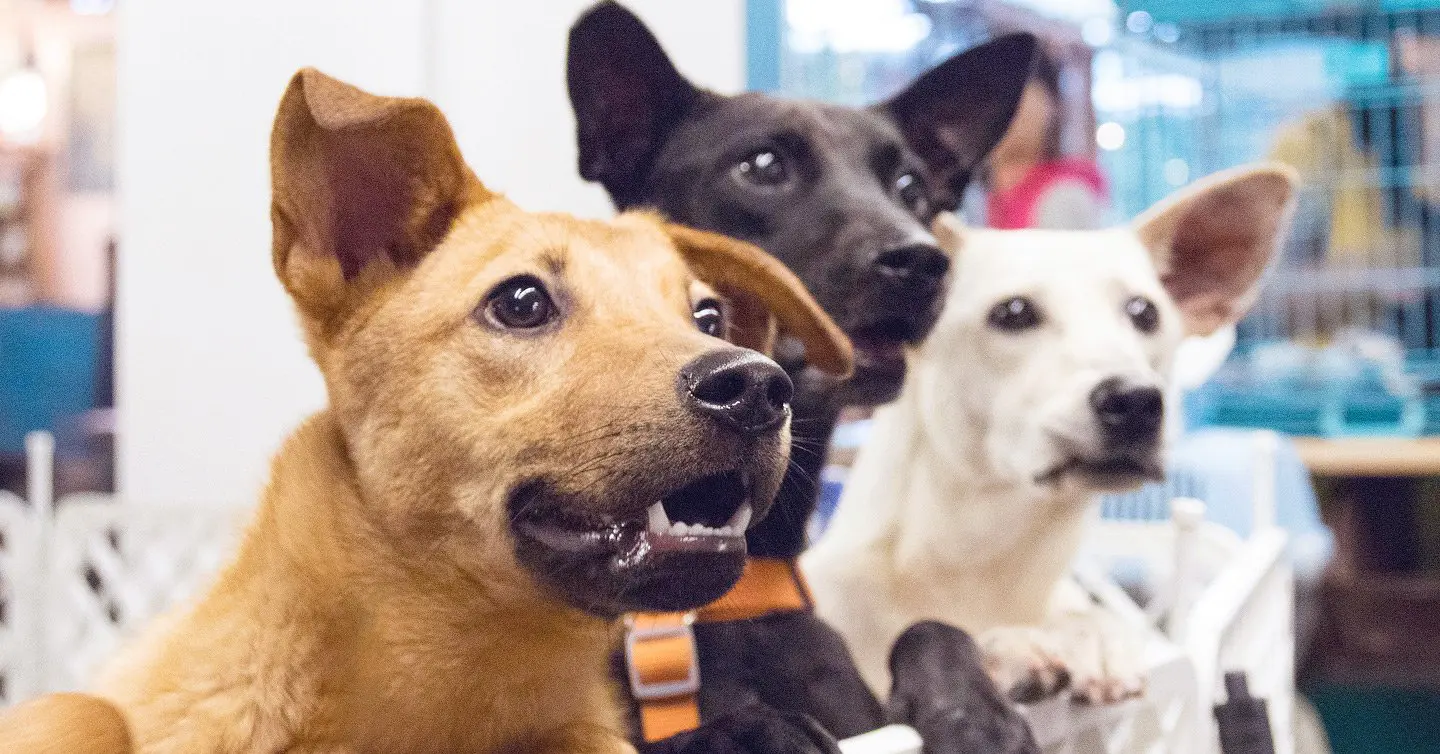The holidays can be overwhelming, with all the traveling and hosting friends and going to large parties where family from all over the country or the world come together to remind themselves why they only do this once a year. And then there are the hard-to-answer questions, like: what kind of food should I bring? How much money should I spend on gifts?
However, no matter how exhausting and intimidating the holiday whirlwind is for humans, for dogs it’s often even worse. There are so many humans they’ve never met swirling around, carrying delicious foods the dog is not allowed to have and either ignoring or petting them in ways they may not like.
Meanwhile, the humans the dog actually does know and love may have less time for them as they focus on wrapping gifts, preparing for a string of parties, or – horror of horrors – leaving the dog at home alone while they travel somewhere. And if the dog does get to come along, they may have to meet face-to-face with new dogs or new pets they haven’t met before – and suddenly be expected to make great first impressions and be best friends.
While dogs are lauded as sociable creatures, this last scenario can be a genuine stressor for them. This is especially true this year, with loads of quarantine pups who may not have much experience with meeting new humans or family members and playing with other dogs expected to make new friends.
Fortunately, there are a number of steps humans can start taking now to prepare their canine friends for the holidays. Beginning a dog training regimen that teaches your pup to remain calm and friendly in the company of other pets will be a huge boon to your dog, especially if they’re already shy or aggressive with new animals or in new situations.
The key is to desensitize them to the idea of meeting new animals by introducing them to the concept gradually in safe settings, with you right there to assure them that everything will be okay – and to make sure that everything is.
All of this sounds like a tall order. Fortunately, it’s not as complicated as it sounds. Below, I’ve broken it down into several easy steps that anyone can follow at their own pace to make sure their furry friend is ready for the holiday season.
1. Know your dog.
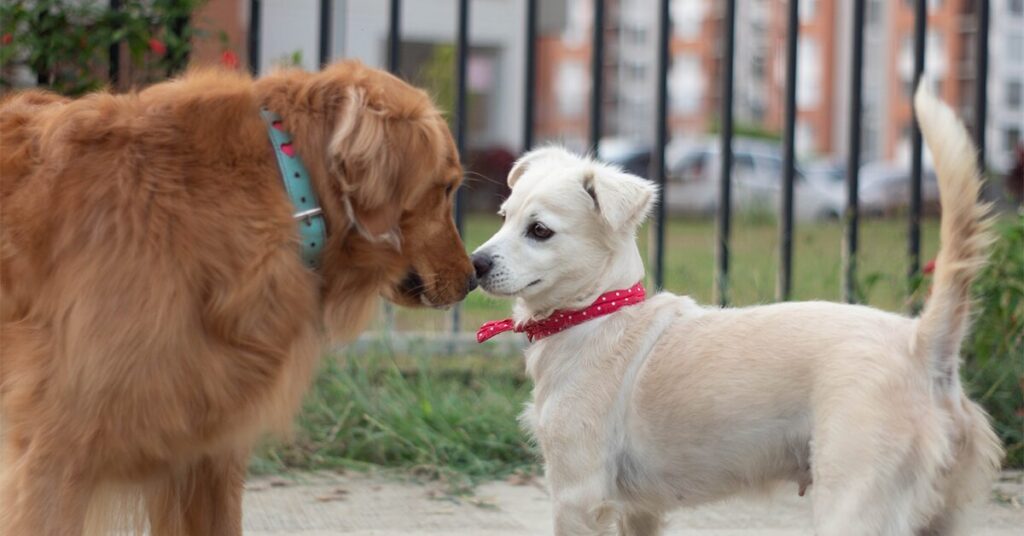
This is surely the easiest step in the process. After all, you already know your dog as well as you know yourself, right? And for the holidays, you need to know your dog’s personality and how they tend to react to other adult dogs or puppies when on a walk or playing outside. Some dog parents don’t have this luxury because they never (or rarely) pass other dogs or animals on their walks, but most dog owners should have a sense of how their dog reacts when passing another dog. Are they calm? Do they lunge because they’re excited to greet the other dog? Do they seem shy or friendly? Aggressive? Do they display good behavior in general, or are they reactive and testy? Watching your dog’s body language and getting a sense of their role when dogs meet will give you a better sense of what they need to work on before the holidays. You can also look to study their breed temperament online to better understand their personalities. (Dogs like Golden Retrievers and Labrador Retrievers, for example, are renowned for their friendly temperaments.)
2. Be prepared.
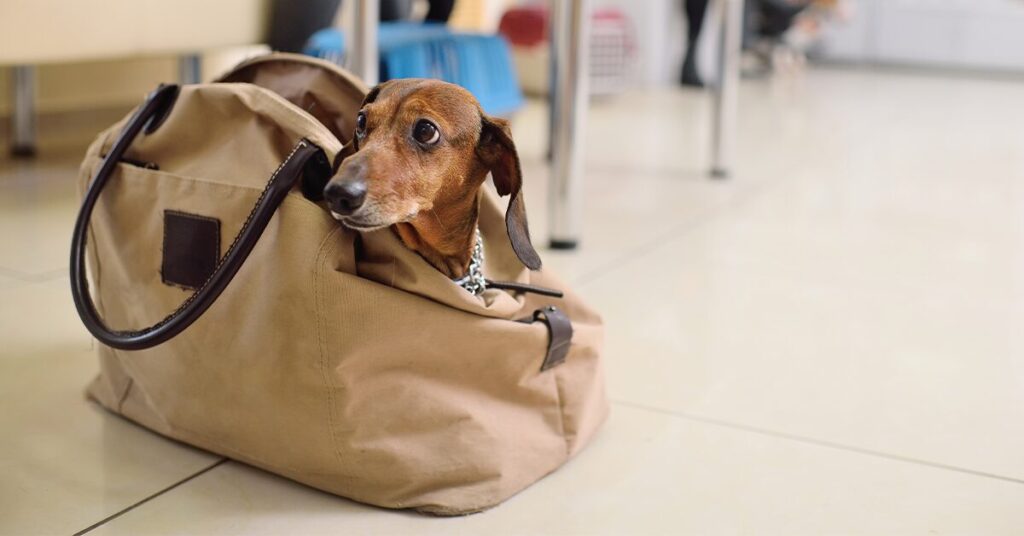
If possible, know what kind of situation you and your dog are going to be walking into ahead of time. For people who are going to be visiting friends or relatives (or having friends and relatives visit) with their pets, make sure you talk to them ahead of time about what kind of pets they have and how they tend to fare in dog introductions. Are they territorial about food? Do they tend to play too aggressively or lash out? Do they have a space in the house that is “theirs” that cannot be messed with? All this information will help the pet parents involved come up with a workable plan to introduce (or not) their pets. For anyone travelling with pets, you can’t be prepared in the same way for every animal you’ll meet, but you should still look into the places you’ll be passing through or staying at (airports, rest stops, hotels, etc.) to see what accommodations and rules they have for dogs.
3. Practice!
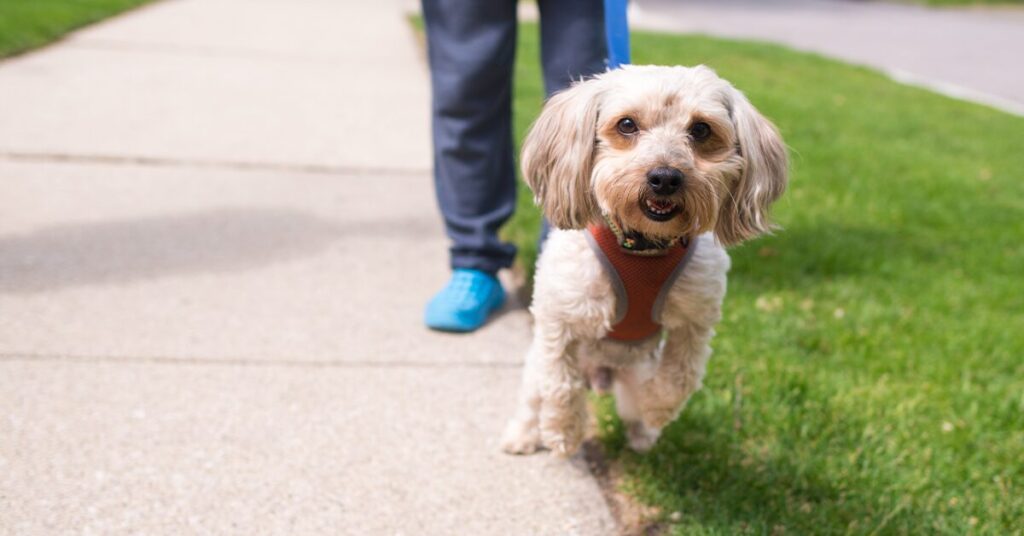
If you can, ease your dog into meeting other animals in environments that will be less stressful than a busy airport or a big party. If you usually go for walks in a place where there are few or no other dogs, switch it up: start walking in neighborhoods with a lot of dogs at busier times of day, or walk on popular trails or pathways nearby. This will give you a sense of how your dog tends to interact with other dogs, as well as teach them they can meet or see other dogs without it turning into a huge production or a scary situation. If your dog is handling these situations well, you can give them more leeway to sniff, greet, and play with some of the other dogs who seem interested. Make sure to tell their owners ahead of time, though, that your pup is still working on greetings and may not have the best social skills in the meantime – and that you have a plan to remove them from the interaction if it gets too intense.
4. Work on eye contact.
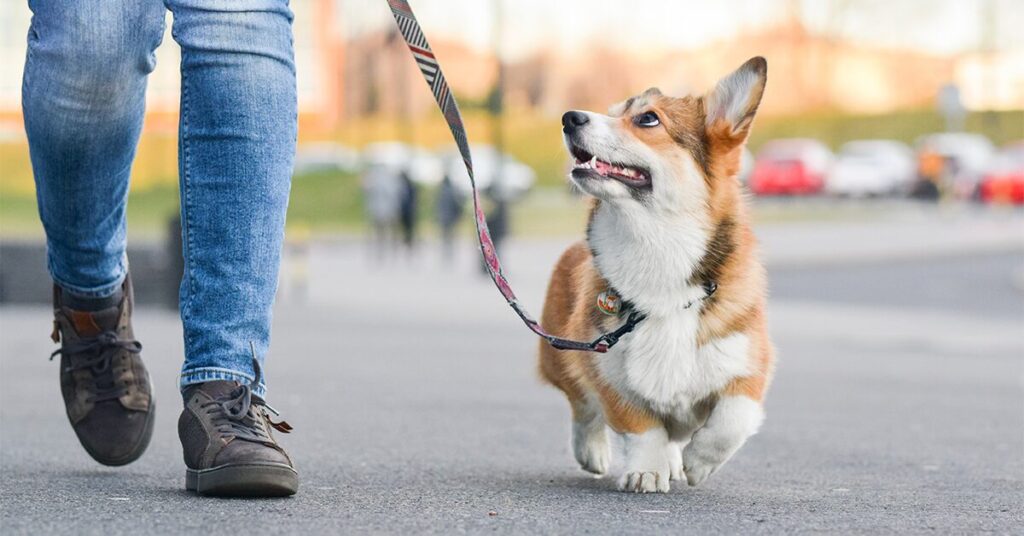
Especially with other dogs, having your dog make eye contact with their playmate as they’re sniffing and greeting each other will help them and the other animal trust one another and go into the interaction as equals. Training your dog to make eye contact for a second and then look back to you for praise during playtime or training sessions will help them go into greetings with confidence and a sense of safety. Most dogs will do this instinctually – it shouldn’t require any training from you at all. If you do notice your dog struggles with eye contact, though – if you see them either not meeting the other dog’s eyes or staring them down to assert dominance – you can practice by having your dog make brief eye contact with you or another human throughout the day. A good way to encourage eye contact is to make a noise that will attract their attention, then reward them for that few seconds of eye contact with dog treats when they look over to you.
5. Take it up a notch.

The nearest analog canine society has for a holiday party is a dog park, so if there’s one near you, it’s a great place for your pup to practice their social interactions. Some dogs are less stressed about meeting other dogs when off-leash because they have more freedom to approach, interact, or run away as they see fit. Others, however, can go off the rails when they know their human is not right there to keep them safe or in line, so make sure to keep a close eye on your dog, especially for your first few visits. If there isn’t an off-leash dog park in your area, you can also look for a state park or trail system that allows dogs to run around off-leash to get some practice in that way. Before any off-leash practice, though, you should brush up on your come or return command, and make sure you always have the leash on hand in case things get out of control.
6. Plan a dry run.
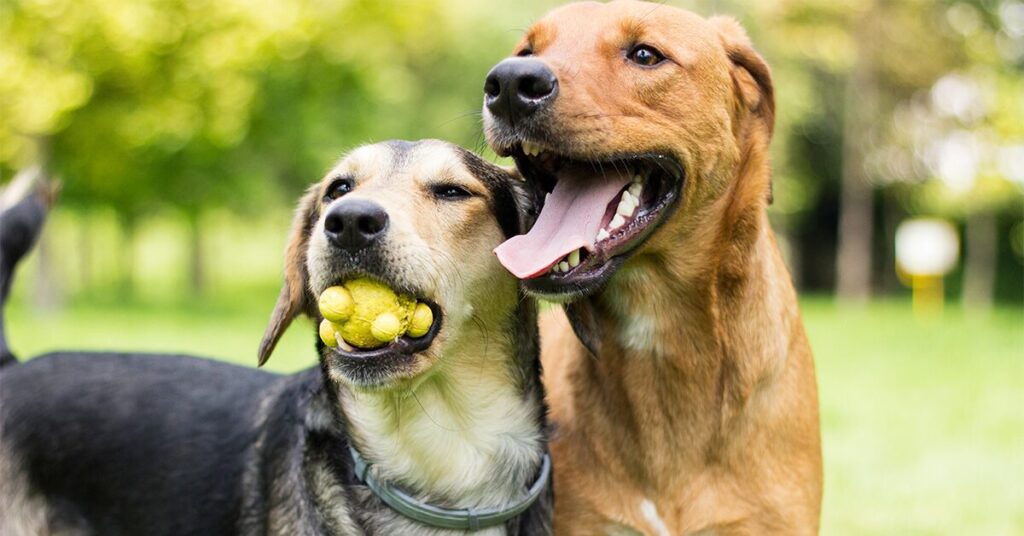
Ideally, your dog would meet any pets they’re going to interact with over the holidays before the big event, so they can get to know each other away from the stress of a new house or large party. If that isn’t possible due to distance or timing or something else, doing practice introductions with other pets will still be a useful exercise to prepare your dog for the big day. Find a friend or neighbor whose pet is available to help you out – ideally a pet similar to the ones your dog is going to be meeting, if you know who they are. This means finding a cat if they’re going to be a cat, or a larger or smaller dog, depending. Again, this is an ideal situation – in practice, it might be impossible to find a perfect analogue to a specific pet. Your dog will just have to hope all their practice with a German shepherd will pay off when they meet their first kitten.
7. For dogs: Meet on neutral territory
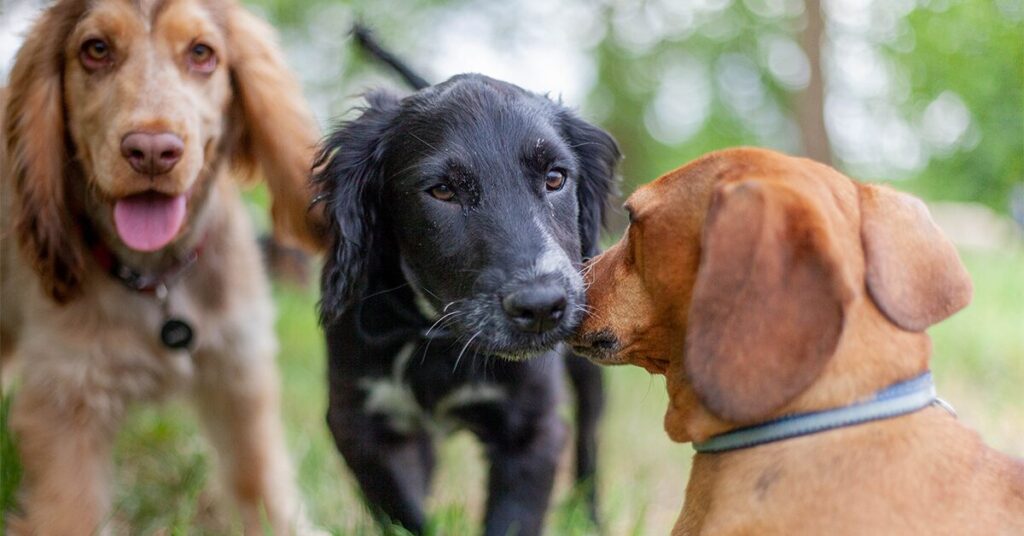
Dogs are territorial creatures. If they meet for the first time on either of their respective “turfs,” they might be defensive and things can get messy. The ideal place for a first meeting is outside, in a place that neither dog feels a need to protect – in the street (if it’s safe), the park, or a yard. If dogs absolutely have to be introduced inside, make sure to do it in a space free from any belongings the dog might feel the need to defend, like water or food bowls, a bed, or toys.
8. For cats: Use a carrier.
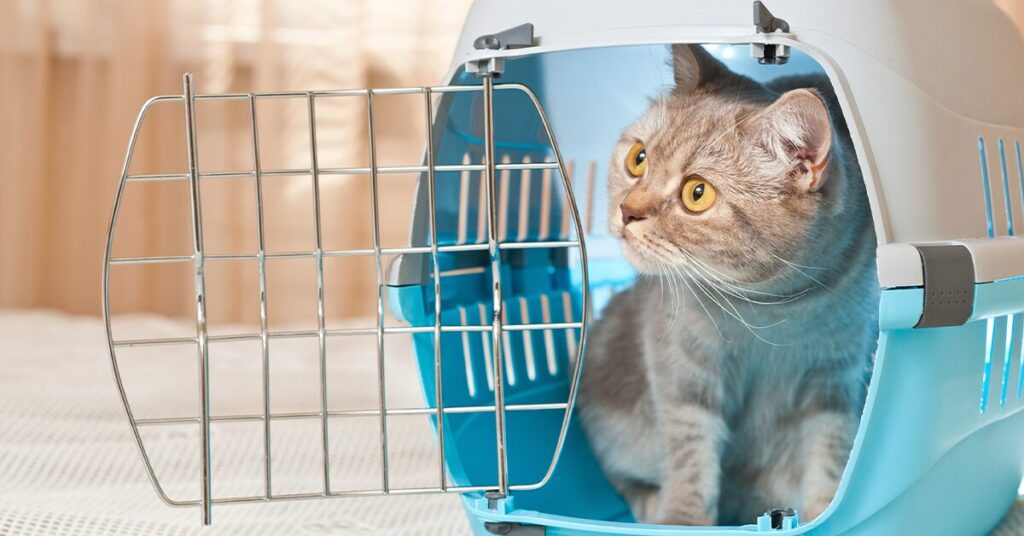
Dog-to-cat introductions are less predictable than dog-to-dog interactions, and the size difference means the chance of the cat being injured is much higher. For these reasons, you should introduce cats to your dog in a carrier, where the cat will be and feel safer and more secure. Let your dog sniff the carrier, getting a feel for the little critter inside it. If they both seem calm, you can let the cat out of the carrier, but make sure to always keep an eye on them while they are interacting. It is also good for the cat to have a cat tree or other high place where the dog cannot reach them so they can have some safe alone time.
9. Read the room.
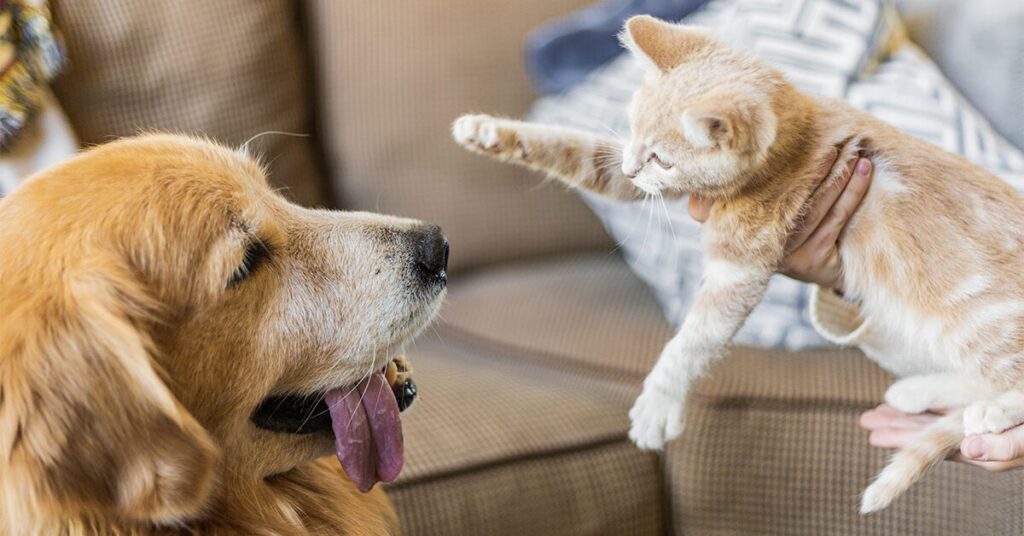
Both dogs and cats communicate through body language, so watch your animal for cues on how they’re reacting to the new pet. If you start to notice signs of fear, aggression, or tension in either animal, it’s time to separate them. The key thing is not to force anything and to follow their lead – if they seem calm and relaxed, you can let them get closer and give them more freedom to explore this new relationship.
10. Keep things calm.
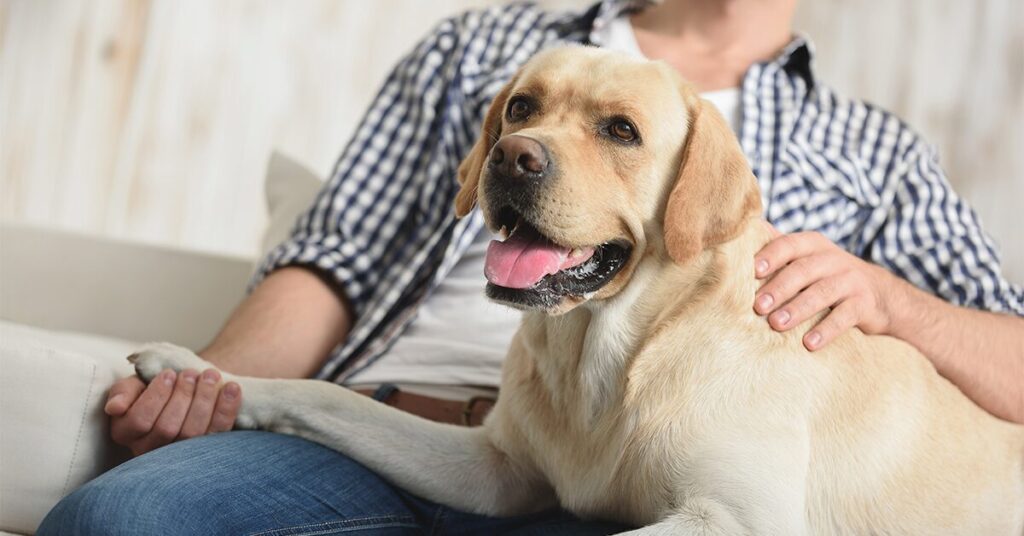
Animals read mood cues from their humans – just as you’re going to be reading cues from them – so tell your dog this is a safe interaction by modeling calm, relaxed behavior. Take a few deep breaths and try not to let tension build up in your body. Introducing your dog to a new pet can be harrowing, but the more you let your dog know that you’re nervous, the more nervous they’ll be – and the more likely it is that something will go wrong. If you act like everything is going to be just fine, in all likelihood, it will be!
Of all the stressors of the holidays, introducing your dog to a new pet should not be one of them.
Instead, watching them make new friends and play with other animals can and should be one of the joys of the holiday season. It might take a bit of practice and some careful planning, but there’s no reason your dog can’t have as much fun at your holiday parties as you will.
